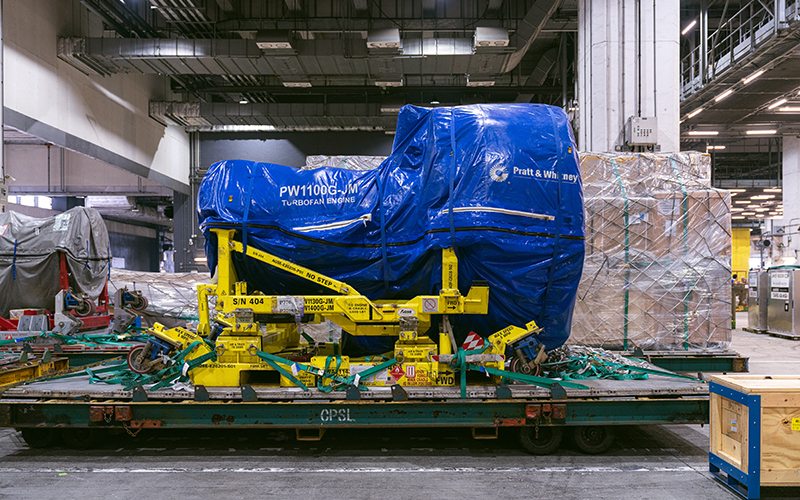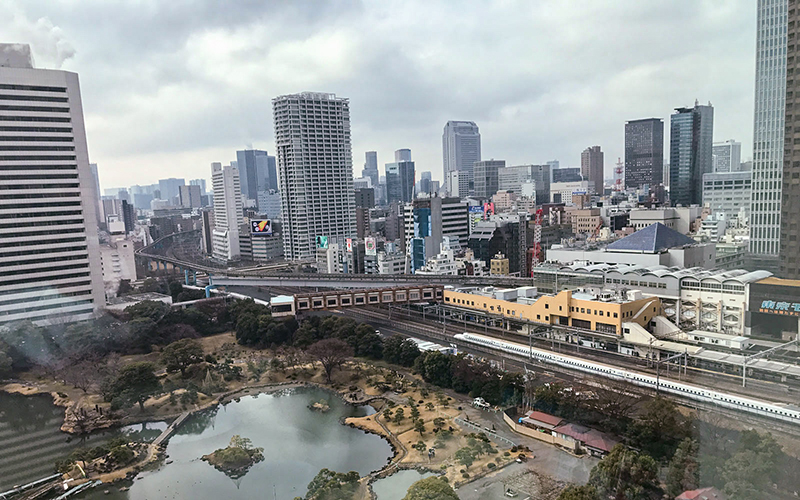Shuichi Ueba is the Regional Head of Cargo for Japan and Korea, now in his 35th year with Cathay Pacific, Ueba-san tells us about his career highlights, and why he enjoys cargo.
What are the main air-cargo exports from Japan?
There are three main pillars. First is semiconductor production machinery; the ‘stepper’ machines that print ‘wafers’ filled with micro-processors. We move around 200 of these machines a year, with regular shipments around Asia and, recently, Frankfurt. The market is a bit soft at the moment, but we are seeing more ‘power-semiconductor’ steppers, which are less high-grade and produce chips for automotive or domestic appliances, rather than top-end IT machines.

The second is automotive, with things like ignition systems, gears and sometimes engines. These parts not only supply Japanese manufacturers like Nissan and Toyota, but all the global brands as well. Electric vehicles are becoming more of a focus, and while they require only 30 per cent of the components of petrol-driven cars, they still need motors, transmission and things like sensors, cameras and control systems, so we see this business continuing.
Lastly, our Japanese produce. I’d like to thank people in Hong Kong consumers in particular, for paying the premium for our quality fruits! Even during the pandemic this demand remained high. We have just finished the strawberry season, and that will be followed by peaches, melons and grapes.
How about imports?
Interestingly, Japan also imports a lot of fruit. We need to import standard fruit for domestic consumption. Our population is decreasing and fewer people are working in agriculture. Salmon is always big and comes from Norway, Australia or the Americas. The rest of the imports are based mainly around semiconductors or machinery.

What are the flows in South Korea?
They are similar to Japan’s. The top export is semiconductors because of Samsung, which produces these chips. Then there are a lot of electronic parts for consumer goods being exported.The other big export item is perishables – South Korea is putting a lot of effort into developing fruit exports to Hong Kong and Southeast Asia. Imports are also similar to Japan, with some foodstuffs along with machinery and semiconductor-related components to make industrial goods for export.
How have your network and frequencies grown since last year?
Japan is served by 10 Cathay Cargo freighters a week – six to Narita and four to Kansai International (KIX) at Osaka, which fly to HKG via ICN – while Incheon receives three freighters and 24 passenger flights. Japan’s passenger network is rebuilding from last year, with 44 flights weekly split between Tokyo’s two airports Narita and Haneda, 24 to KIX and 20 between Fukuoka, Sapporo and Nagoya. In addition, our region is served by near daily Air Hong Kong services to Narita, KIX, Nagoya and Incheon, and the team acts as GSAs for those flights as well as HK Express flights to the region.
What proportion of your cargo exports use Cathay Cargo’s special solutions?
In Japan, we have a very high proportion of cargo that uses our specialist shipment solutions – 70 per cent in 2022, which was the highest across the network. In South Korea, it’s lower at 40 per cent – our focus is to grow this proportion of special-handling shipments. So far, we have again achieved 70 per cent in the first quarter handling shipments. So far, we have again achieved 70 per cent in the first quarter in Japan, bolstered by perishable exports using Cathay Fresh, and taking the place of priority shipments in what had been a constrained market.
How are you enjoying your South Korea role?
Greatly, we work together well as Cathay colleagues. There are similarities in our markets because customer expectations are equally high, and we are both committed to reaching our targets, which reflects similarities in how we think and work. We use English when we meet and it feels like one team.
What are the current challenges and opportunities?
The big challenge is the ramp up in capacity in belly space from the resumption of our passenger network in a soft market. However, we have an advantage with our freighters and being able to offer main-deck space. We won business this year to carry aircraft engines. We have a deal with an airline to transport Rolls-Royce Trent XWB engines from its Airbus A350s to Hong Kong for maintenance. As for the rest of the year – watch this space!

Ueba-san’s 35 years with Cathay
I first joined Cathay Pacific in 1988 as a Reservation Officer in Osaka on the passenger side, which included handling complaints when our night flight left after the 9pm curfew at Itami, prior to KIX opening. I then took a role in the passenger sales at Kobe to join the marketing team in the Tokyo office handling sales promotions, including bringing a Sumo tournament to Hong Kong. In 1996, I was seconded to Hong Kong in marketing, and then went back to Japan working for Cathay Holidays Japan, after which I became Passenger Manager in Sapporo, followed by Osaka and finally back in Tokyo. My journey in cargo started in 2012, when I became Cargo Manager, Japan.

How was the transition to Cargo?
When I joined Cargo, the culture was quite reticent; people were not willing to speak out in meetings, which was not unusual in Japanese corporate life then. I saw my mission was to change the culture to one that was more democratic and open while still achieving targets. My team were kind enough to teach me the ABCs of cargo. In return, I asked them to deliver results, and they do, but I don’t dictate how – they know their markets best. It’s not just a commercial team, we work with Cargo Services, and without them and their specialist knowledge, we cannot succeed. That team spirit is why I prefer working on the cargo side.
What do you enjoy most about cargo?
Other than the team ethos, I enjoy how the market changes every day. It’s also a global business and I enjoy working with the other Regional Heads of Cargo, sharing intelligence quickly, which is important as lead times are so short. Also, while the pandemic was a difficult time for the world, it also gave my team insight into the importance of air cargo, not just in keeping trade moving but in saving lives. We take a lot of pride that our work contributed to this.

How has cargo changed?
The move to digital has been important and not just in shedding paperwork. We’ve got Click & Ship, our automated booking platform. But as we offer the convenience of self-service with booking to customers, it’s even more important to look after their cargo. If something goes wrong, we need to work on service recovery quickly, and we still need constant dialogue with them. Digitalisation makes this easier, and it’s essential in the Japanese market – if a Shinkansen train is three minutes late, people go crazy!









